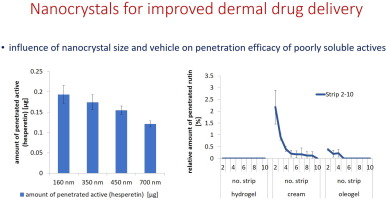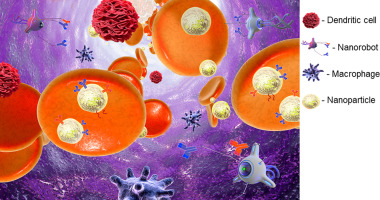- Home
- Blog
- News
- Basics
- Sources
- Agencies, Regulatory & Organisations
- CERSI Excipients Browser
- Excipient Report
- Excipient DMF List
- EXCiPACT Certified Companies
- Excipient Documentation
- Excipient EINECS Numbers
- Excipient E-Numbers
- FDA Inactive Ingredient List
- FDA GRAS Substances (SCOGS) Database
- IPEC Americas
- USP - U.S. Pharmacopeia
- Definitions
- Whitepapers / Publications
- Supplier
- Services
- Media
- Events
- 1st pharmaexcipients Poster Award
- Event Calendar
- Events featured by pharma-excipients
- 4th Annual Formulation & Drug Delivery Congress
- DDF Summit
- ExcipientFest Americas
- ExcipientFest Asia
- Global CompliancePanel
- International Conference and Exhibition on Pharmaceutics & Novel Drug Delivery Systems
- Formulation & Drug Delivery USA Congress
- Laboratory Medicine 2018
- Making Pharmaceuticals Europe
- Making Pharmaceuticals Exhibition
- Pharma Integrates
- PharmaExcipients China @CPhI China
- TTC Technology Training Center
- Jobs
- Online Sourcing
- Contact
29. August 2018
Many approaches have been developed over time to overcome the bioavailability limitations of poorly soluble drugs. With the advances in nanotechnology in recent decades, science and industry have been approaching this issue through the formulation of drugs as nanocrystals, which consist of “pure drugs and a minimum of surface active agents required for stabilization”. They are defined as “carrier-free submicron colloidal drug delivery systems with a mean particle size in the nanometer...
25. April 2018
Nanocrystals are composed of 100% active and possess an increased aqueous solubility and dissolution velocity when compared to larger sized materials. Nanocrystals can be used to improve the bioavailability of poorly soluble actives not only for oral, but also for topical application. In this study nanocrystals of different sizes were produced and the influence of size on dermal penetration was investigated. The influence of different excipients and vehicles on the penetration efficacy upon...
23. January 2018
Nanotechnology ushered the field of medicine in to a new era. Miniaturization, increased surface area, and the unique physicochemical properties in the nano dimension were explored for new applications. Pharmaceutical industry picked up the technology and early success came fast for oral drug delivery through improvement in dissolution properties of the active molecules. Many products were launched using the nanocrystal technology on the oral side.
29. April 2017
The aim of this study was to develop oral lyophilisates with improved meloxicam (MEL) dissolution, optimizing each step of the preparation by design of experiments. First, meloxicam nanosuspensions were prepared by high-pressure homogenization (HPH), using PVP, Poloxamer or PEG as stabilizers and were subjected to freeze-drying using mannitol as cryoprotectant.
15. March 2017
Abstract Composite films were sprayed from mixtures of water soluble hydroxypropyl methylcellulose (HPMC) and either nanofibrillated cellulose (NFC) or cellulose nanocrystals (CNC). Fiber diameter was similar for both nanocelluloses but fiber length was several μm for NFC and about 200 nm for CNC. Films were characterized for morphology, swelling, mass loss and transport properties. NFC-HPMC films swelled less than CNC-HPMC films; with a HPMC content of 20 wt% NFC-HPMC and CNC-HPMC films...
20. December 2016
Abstract Electrospraying is renowned for its simplicity and versatility, and which can effectively produce particles with well-controlled size, size distribution, particle shape, morphology and microstructure at the nano/microscale. In this study, coaxial electrospraying was used to investigate its feasibility for preparing nanoparticles made up of nanocrystals encapsulated within a polymer shell. Firstly, aqueous nanosuspensions of darunavir were prepared by wet media milling. Then the...
19. December 2016
Abstract: In this work, cellulose nanocrystals (CNCs) were obtained from flax fibers by an acid hydrolysis assisted by sonochemistry in order to reduce reaction times. The cavitation inducted during hydrolysis resulted in CNC with uniform shapes, and thus further pretreatments into the cellulose are not required. The obtained CNC exhibited a homogeneous morphology and high crystallinity, as well as typical values for surface charge. Additionally, CNC membranes were developed from CNC solution...
24. October 2016
Abstract The objective of this study is to design novel dissolution-enhanced microparticles loaded poorly soluble drug nanocrystals used a low viscosity of hydroxypropylcellulose (HPC) as matrix carrier. An interesting approach combined homogenization and the spray-freeze-drying technique was developed. The results demonstrated that the ratio of HPC to drug played an important role in size-reduction efficiency of drug during homogenization. And the formation of cage-like structure of the...
10. July 2016
A cationic nanocrystal formulation containing dexamethasone acetate nanocrystals (0.05%) and polymyxin B (0.10%) for ophthalmic application was produced using a self-developed small scale method for wet bead milling. The formulation developed offers the advantage of increased saturation solubility of the drug (due to the nano-size of the crystals), increased residence time in the eye (due to small size and increased mucoadhesion by the cationic charge) resulting ultimately in potential...
29. May 2016
Abstract: Drug nanocrystals are a versatile option for drug delivery purposes, and while the number of poorly soluble drug materials is all the time increasing, more research in this area is performed. Drug nanocrystals have a simple structure—a solid drug core is surrounded by a layer of stabilizing agent. However, despite the considerably simple structure, the selection of an appropriate stabilizer for a certain drug can be challenging. Mostly, the stabilizer selection is based purely on...



